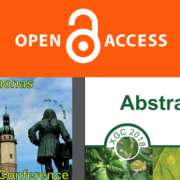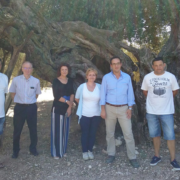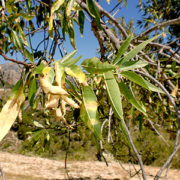Evaluation of the effect of Xylella fastidiosa on leaf ionome and calcium-related gene expression profiles of infected olive trees
Authors
Giusy D’Attoma (1,2), Leonardo De La Fuente (3), Pasquale Saldarelli (1), Raied Abou Kubaa (1), Massimiliano Morelli (1), Annalisa Giampetruzzi (2), Maria Saponari (1), Donato Boscia (1), Vito Nicola Savino (2), Paul Cobine (4)
Affiliations
1. Consiglio Nazionale delle Ricerche, Istituto per la Protezione Sostenibile delle Piante, Sede Secondaria di Bari, Bari, Italy
2. Università degli Studi di Bari, Dipartimento di Scienze del Suolo, della Pianta e degli Alimenti, Bari, Italy
3. Auburn University, Department of Entomology and Plant Pathology, Auburn, Alabama, United States of America
4. Auburn University, Department of Biological Sciences, Auburn, Alabama, United States of America
Abstract
Xylella fastidiosa (Xf) is a xylem-limited bacterial plant pathogen that is responsible for Olive Quick Decline Syndrome (OQDS), a devastating disease reported in Salento (Apulia, Italy). Field observations show that olive cv. ‘Leccino’ show milder symptoms when compared to the highly susceptible cv. ‘Ogliarola’. A prior transcriptome analysis of ‘Leccino’ and ‘Ogliarola’ cultivars in response to infection by X. fastidiosa ‘De Donno’ strain has revealed that a Calcium-Dependent Protein Kinase (CDPK1) gene is upregulated in ‘Ogliarola’ infected leaves. Moreover Ca accumulation in leaves have been associated with symptomatic tobacco, blueberry, grapes and pecan plants infected with Xf. Calcium is a critical second messenger and its cellular distribution can trigger diverse physiological processes including stress response and plant defence. Based on these observations we pursued a study of the ionome and CDPK1 gene expression profiles of symptomatic and asymptomatic infected leaves of cv. ‘Leccino’ and ‘Ogliarola’ from three orchards. Comparison between the two cultivars reveals changes in ionome and CDPK1 gene expression. ‘Leccino’ symptomatic leaves had significant (p < 0.01) higher Ca concentration as compared to asymptomatic leaves, while differences for the susceptible cv. ‘Ogliarola’ were non-significant (p > 0.2). In addition, sodium levels were higher in symptomatic leaves of both varieties. qRT-PCR confirmed that CDPK1 expression in ‘Ogliarola’ is significantly increased relatively to ‘Leccino’ trees grown in the same field and the increase is higher in symptomatic leaves. The impact of these changes on disease progression will be discussed.
The present work was done in the framework of an STM granted by the EU COST Action CA16107 and with the financial and scientific support of the EU, H2020 research projects POnTE (GA 635646).
Published on July 18, 2018 by PROCEEDINGS OF 6TH XANTHOMONAS GENOMICS AND 2ND ANNUAL EUROXANTH CONFERENCE HALLE 2018









